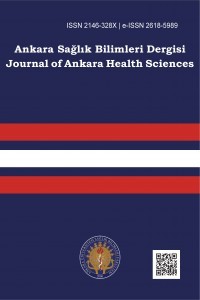Torakotomi sonrası ağrı ve analjezi yöntemlerinin kullanılmasında hemşirenin rolü
Torakotomi en ağrılı cerrahi girişimler arasında olup, şiddetli ağrıya neden olabilmektedir. Bu ağrı torakotomi ameliyatı olan hastaların %2167’sinde görülmekte ve pek çok postoperatif komplikasyona neden olmaktadır. Kontrol edilmeyen ağrı solunum ve tromboembolik komplikasyonlara neden olması ve kronikleşmesi nedeniyle morbidite ve mortalite riskini arttırmaktadır. Bu nedenle, torakotomi yapılan hastalarda etkili ağrı yönetimi önemlidir. Ağrı yönetiminin amacı postoperatif komplikasyonları ve ağrıyı önlemektir. Torakotomi sonrası ağrıya neden olan bir tek kaynak olmadığından, ağrının her seviyede kontrol altına alınması gerekmektedir. Bu bağlamda, torakotomi sonrası analjezide farmakolojik ve nonfarmakolojik tekniklerin kullanıldığı multimodal yaklaşım tercih edilmektedir. Bu yaklaşım, analjeziklerin tüketimi ile birlikte ilaç yan etkilerini de azaltır. Opioidler ve steroid olmayan antiinflamatuar ilaçlar farmakolojik analjezide kullanılmaktadır. Kognitif davranışsal yöntemler ve periferal yöntemler farmakolojik olmayan teknikler arasındadır. Farmakolojik olmayan yöntemlerin analjeziklerle birlikte kullanımı analjeziklere bağlı yan etkileri azaltarak ağrı kontrolünü sağlamaktadır
Anahtar Kelimeler:
Torakotomi sonrası ağrı, hemşire, farmakolojik olan ve farmakolojik olmayan analjezi
POSTTHORACOTOMY PAIN AND NURSE’S ROLE ON THE USE OF ANALGESIA METHODS
Thoracotomy is among the most painful prosedures of surgery and may cause severe postoperative pain. This pain persists in 21-67% of the patients that undergoing thoracotomy and causes lots of postoperative complications. The results of post-operative pain undertreatment include increased morbidity and mortality, mostly due to respiratory and thromboembolic complications, and development of chronic pain. Effective pain management is very important for the patients who undergo thoracotomy. The aim of pain management is preventing on serious complications of uncontrolled postoperative complications and postthoracotomy pain. There is not a single source of postthoracotomy pain, thus, pain control must be provide at each level. In this connection, multimodal analgesia including pharmacologic and nonpharmacologic tehniniques be prefered in posttohoracotomy pain management. There are many approaches for postthoracotomy analgesia and a multimodal approach is probably the most effective. In multimodal analgesia pharmacological and nonpharmacological techiniques are used together for thoracotomy patients. Thus, in multimodal analgesia regimen for postoperative pain, reduces the amount of analgesic consumption and with minimal drug side effects. Opioids, and non steroidal antiinflamatory drugs are used for the pharmacological analgesia. Cognitive behavioral techiniques and periferal techiniques are among the non pharmacological analgesia techiniques. Nonpharmacologic techiniques provides pain control with reduced analgesicrelated side effects. Nurses which have pivotal roles in postoperative pain management must use nonpharmacological techiniques with analgesics for effective pain relief with minimized analgesic consumption
- ISSN: 2146-328X
- Yayın Aralığı: Yılda 2 Sayı
- Başlangıç: 2012
- Yayıncı: Ankara Üniversitesi
Sayıdaki Diğer Makaleler
Cinsel Heyecan Arama Ölçeği (CHAÖ): Türkçeye uyarlama, geçerlik ve güvenirlik çalışması
Sağlık Kurumları Yöneticiliği Bölümü öğrencilerinin toplumsal cinsiyet rollerine ilişkin tutumları
Ömer R. ÖNDER, Ayşe Saba YALÇIN, Bayram GÖKTAŞ
Torakotomi sonrası ağrı ve analjezi yöntemlerinin kullanılmasında hemşirenin rolü
Sevilay ERDEN, Sevilay ŞENOL ÇELİK
Terapotik oyun: hasta çocuk ile iletişimin anahtarı
Berna KIRAN, Ceren ÇALIK, Figen İşık ESENAY
Sağlık hizmetlerinin kalitesini iyileştirmede bilgi sistemlerinin rolü
